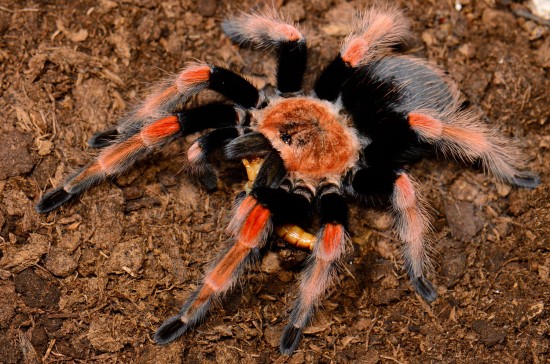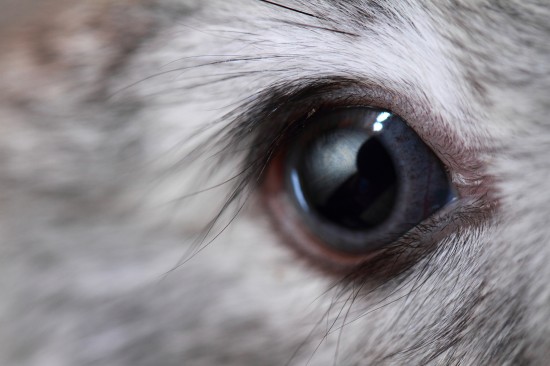

The idea of having a tarantula within the home is certainly not for everyone, but these exotic and unusual pets do have a certain appeal for many of us! If you find spiders an endless source of fascination and are wondering if they make good pets, you may find it hard to wade through all of the common misconceptions and misinformation published about tarantulas, and sort the fact from the fiction. In this article, we will look at some of the most talked-about topics regarding tarantulas, and the real facts behind them.
Compared to the vast majority of other pets, including other caged animals, tarantulas are actually fairly low maintenance to keep, and do not need interaction and training in order to thrive. In fact, it is often advised that tarantulas should not be picked up or handled at all.
Tarantulas are good pets (for spider fans)! For many reasons; they are clean, quiet, do not take up a lot of space and do not require a huge amount of daily care and maintenance to thrive.
However, like any exotic pet, tarantulas have their own unique care and welfare issues and requirements, and time needs to be spent looking after them, keeping their surroundings clean, and checking that they are well and healthy. As a pet that is not only exotic but also venomous, it is very hard to get veterinary treatment for tarantulas, and the vast majority of regular veterinary practices are neither equipped nor willing to treat tarantulas.
This is often the first question at the forefront of people’s minds! Tarantulas have a fearsome reputation, and are often used in movies and on TV for their shock value, and portrayed as a vicious, fearsome predator. While it is certainly true that to insects and even some small mammals, the tarantula is a certain threat, they are usually docile and non-aggressive to larger animals (including people) and will almost always retreat out of choice rather than attack.
A tarantula that is scared or feels threatened and has nowhere to retreat to, however, will often face up to prey much larger than itself, and will potentially bite the hand or other exposed skin of a handler if distressed.
However, the fact is that no one ever died from a tarantula bite. The venom of a tarantula is about as potent as that of a bee sting, and a bite will usually cause localised pain and inflammation but nothing worse! Occasionally, some people prove to be allergic to tarantula venom, and so it is important to be alert to the possibility of anaphylactic shock after a bite, particularly in people who are allergic to bee or wasp stings.
Different tarantula breeds have different potencies to their venom, and some types of tarantula are undoubtedly more aggressive and willing to bite than others. Good beginner tarantulas such as the Chilean Rose and the Mexican Redknee are reluctant to bite, and have a weak venom.
Most species of tarantulas also have another line of defence as well as their venom; their abdomens are covered in coarse yet fine hairs, which are irritating to the skin. A tarantula that feels threatened will usually use their legs to kick some of these hairs (which are known as “urticating hairs”) from their abdomen, in the direction of the threat. These tiny hairs can cause intense itching and irritation in the localised area, but are not otherwise dangerous. However, getting these urticating hairs in the eyes can lead to severe discomfort, irritation and inflammation, something that you should always be aware of if handling a tarantula.
In the wild, tarantulas eat a wide rage of live foodstuffs, including insects, small rodents, and even in some cases, birds! Tarantulas will even sometimes take on more dangerous prey, including scorpions and other animals that are almost certain to fight back!
It used to be common practice to feed live pinkie mice (newborn baby mice) to tarantulas in the UK, although this practice is now illegal, and it is not possible to buy live pinkie mice as food. Many tarantula owners now feed frozen and defrosted pinkie mice supplementally, but it can be a challenge to get a tarantula to recognise food that is not actually alive.
After eating, tarantulas leave a tightly wound ball of indigestible parts such as the skeleton and bones. These should be removed from the tank regularly, using tweezers rather than fingers to ensure your safety!
Tarantulas go through a moult every few months when young, and around once a year as an adult. The shed skin usually comes off complete in once piece that looks just like a second spider, although it may also be shed in patches and sections. When a tarantula is moulting or getting ready for a moult, they will usually lose interest in food and stop eating.
Tarantulas are vulnerable when they are shedding their skin, and sometimes, even at risk from the presence of prey animals in their enclosure. It is important not to leave live food in the tank with a tarantula that is moulting or approaching a moult, nor to disturb their environment unduly while moulting is underway.
After a moult, it takes around a week for the new, fresh skin to harden off properly, when again, your tarantula may be at risk of attack from their normal prey. After moulting, do not introduce live food into the tank for about a week.
Female tarantulas usually live for much longer than male tarantulas, often for a significant number of years! This means that female tarantulas are usually more popular as pets. Some tarantula species and varieties commonly live for ten to twenty years in captivity, so a tarantula is not a good choice for someone looking for a short-term pet! Female tarantulas have even been known to live up to thirty years old in some cases, although in the wild, this is highly unusual.
 Do Animals Have Souls?
One day when yoga instructor Kari Harendorf was practicing b
Do Animals Have Souls?
One day when yoga instructor Kari Harendorf was practicing b
 Five Of The Most Common Health Problems In Rabbits
Five Of The Most
Five Of The Most Common Health Problems In Rabbits
Five Of The Most
 Making Sure Your Cat Is Warm Enough In The Winter
Making Sure Your
Making Sure Your Cat Is Warm Enough In The Winter
Making Sure Your
 Red Eye In Rabbits Explained
Red Eye In Rabbit
Red Eye In Rabbits Explained
Red Eye In Rabbit
 How To Get Your Dog To Cooperate For Photographs
How To Get Your D
How To Get Your Dog To Cooperate For Photographs
How To Get Your D
Copyright © 2005-2016 Pet Information All Rights Reserved
Contact us: www162date@outlook.com